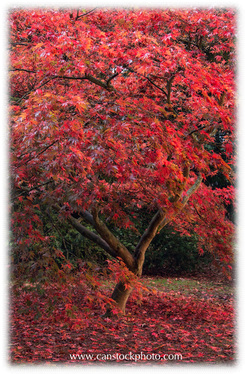
I've written two books on stress, and the latest one I boldly entitled The End of Stress. Now when I'm out on book tours, or presenting keynotes and seminars people ask me if I've ended stress in my life, once and for all.
The truth is we end stress in the present moment--right here, right now--not once and for all. We either end stress by choosing to be undaunted and at peace the moment a stressor raises its head ... or we don't. Peace is the polar opposite of stress and anxiety. It instills a calmer, clearer perspective that in turn generates much better brain function.
 More often than not, becoming stress-free is a correction we make to be at peace, after we've allowed a stressor to grow into a mental storm, like I did one Saturday morning cleaning the house. The way I was going about it was stressful to the point of making me edgy and negative. I started out fighting with a broken appliance I had to fix and feeling irritated with one of the screws that wouldn't unscrew. It was as if a trickster god was tightening the screw as I was trying to loosen it.
More often than not, becoming stress-free is a correction we make to be at peace, after we've allowed a stressor to grow into a mental storm, like I did one Saturday morning cleaning the house. The way I was going about it was stressful to the point of making me edgy and negative. I started out fighting with a broken appliance I had to fix and feeling irritated with one of the screws that wouldn't unscrew. It was as if a trickster god was tightening the screw as I was trying to loosen it.
Next, I was annoyed at having to unload the dishwasher. As I went about cleaning the rooms, it seemed there was ten times more work than usual. I felt victimized that there was no one to help me, and I was wishing I had the money to afford a housekeeper, the lack of which intensified my bad mood.
Then, mercifully, I caught myself in the middle of an unhappy string of self-pitying, resentful thoughts. I stopped with the chores for a moment and practiced not believing any of the thoughts my bad mood was thinking. I managed to let go of thinking altogether, and gave my mind the chance to quiet down. I made the conscious choice to be at peace with whatever chores I had left. As I made this commitment, lines I'd memorized years ago from a poem by D. H. Lawrence came to mind:
As we live, we are transmitters of life.
And when we fail to transmit life, life fails to flow through us.
Give, and it shall be given unto you
is still the truth about life. . . .
It means kindling the life-quality where it was not,
even if it's only in the whiteness of a washed pocket-handkerchief.
As I recited the lines, my attitude shifted. At that very moment, a cloud blocking the sun passed and the sunlight poured through the windows and lit up the room. All at once, everything was OK. I was calm and my mind was much happier. I felt alive and awake, as bright as the sunlight. It surprised me, as it always does when I rediscover how vibrant inner peace actually makes a human being. Peace is not just a sweet sentiment on a holiday card; it's the quality that makes the mind dynamic and expansive (the complete opposite of what stress does to the mind).
 I looked around to see what chores still remained, and set upon them. Work flowed like a dance. As I was raking the last of the leaves in front of the house, a bird flying by caught my eye, and I watched it land in the Japanese maple tree across the street.It was autumn and the maple leaves had all turned scarlet red. Some of the leaves had shed, creating a velvet blanket of red on the sidewalk.
I looked around to see what chores still remained, and set upon them. Work flowed like a dance. As I was raking the last of the leaves in front of the house, a bird flying by caught my eye, and I watched it land in the Japanese maple tree across the street.It was autumn and the maple leaves had all turned scarlet red. Some of the leaves had shed, creating a velvet blanket of red on the sidewalk.
I looked down the street and noticed that the sycamores had shed half of their leaves. Their network of dull gray branches were now exposed that the autumn light turned silver in places. From where I stood, the street gradually sloped down to the avenue, and across the avenue was a large field covered in brown decaying grass with shoots of new green grass emerging from the decay. Overhead a falcon, fluttering in midair, scanned the field for prey. And above this small but beautiful corner of the world was a pale blue autumn sky. For a moment, I felt at one with the world.
As I turned to go back inside the house, I thought if I hadn't shifted my attitude, I would never have experienced that moment of splendor. I thought of Carl Rogers, the great American psychologist, and his idea of the good life, by which he simply meant being well, then doing well on your way to flourishing. For Rogers, the good life emanated first and foremost from "being well." This is what the research on happiness shows. Only 10% of what makes us happy is attributable to our circumstances. A positive, peaceful attitude is four times more likely to achieve the good life. It's has a bigger impact on our quality of life than making more money, getting a better job, or, as in my case that day, being able to afford a housekeeper.
The more we make the correction to peace, the more it becomes our attitude, and the better our life goes. The good life is not so much a set of circumstances or even a fixed state of mind as it is the direction in which our attitude is pointed. To quote Ernest Holmes, "If everyday things are a little better, a little more harmonious, a little more health giving and joyous; if each day we are expressing more life, then we are going in the right direction."